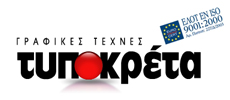Prefectures of Crete
Chania Prefecture
Municipality of ChaniaMunicipality of ApokoronasMunicipality of PlataniasMunicipality of KissamosMunicipality of Kandanos - SelinosMunicipality of GavdosMunicipality of Sfakia
Rethymnon Prefecture
Municipality of RethymnonMunicipality of MylopotamosMunicipality of AmariMunicipality of Agios VasiliosMunicipality of Anogia
Heraklion Prefecture
Municipality of HeraklionMunicipality of MaleviziMunicipality of Archanon - AsterousionMunicipality of FestosMunicipality of GortynaMunicipality of ChersonissosMunicipality of Minoa PediadosMunicipality of Viannos
Lassithi Prefecture
Municipality of MirampeloMunicipality of SitiaMunicipality of IerapetraMunicipality of Oropedio
Musical Instruments
The Cretan Lyre
The basic instrument of Cretan music, the Cretan lyre, first made its appearance in the 17th century, while playing the lyre became popular in the 18th century.
Of course, the initial shape of the instrument was slightly different from that of the modern lyre, which was designed in 1940 by Manolis Stagakis from Rethymno. The lyre, which is in the shape of a pear, used to be accompanied by the "boulgari" and later by the "laouto", the lute, which is still used today.
Both the sound and shape of the Cretan lyre and the traditional songs were improved after World War II, undoubtedly the lyre players of Rethymno played an important role in this development.
During that period Kostas Mountakis and Thanassis Skordalos, both from Rethymno, contributed to the international recognition of the traditional Cretan music in the following decades. Other skilled artists like Manolis Lagos, Andreas Rodinos and Stelios Foustalieris helped to establish the traditional Cretan music.



 ENGLISH
ENGLISH







